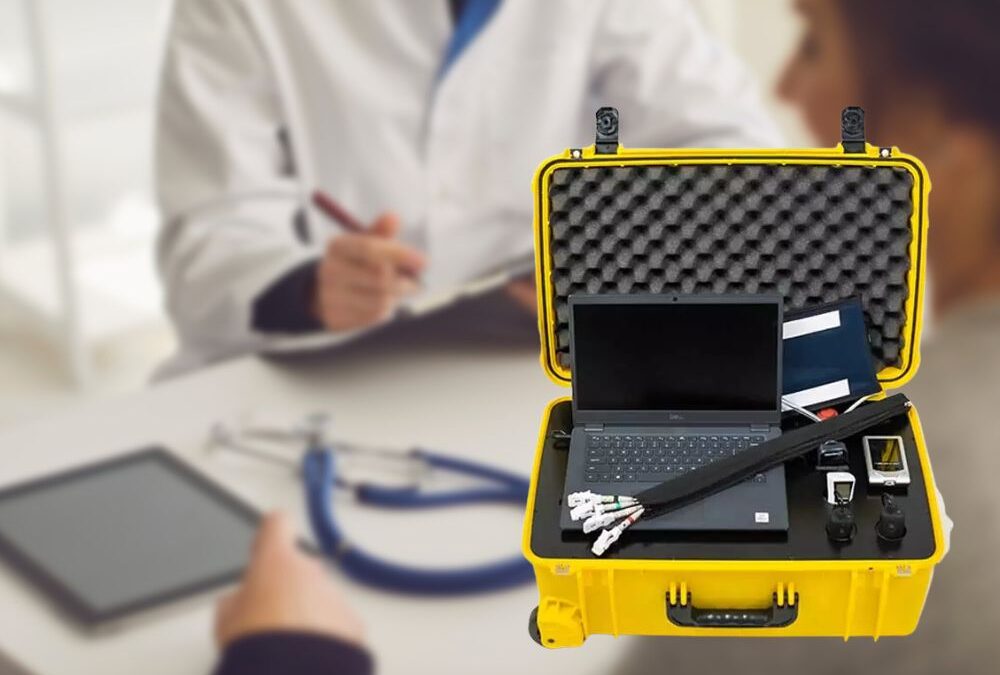Our main product here at CSI Health is the telemedicine kiosk. Our kiosks come in multiple sizes and formats, yet all do the same basic thing: they provide remote access to healthcare services using the latest medical and internet technology. If that description doesn’t help you understand our business any better, you’re in luck. This post will tell you everything you need to know about telemedicine kiosks.
Let us start by breaking down the term into its separate components. Telemedicine is essentially practicing medicine utilizing remote technologies. Thirty years ago, telemedicine could have been as simple as faxing health records to the doctor’s office or having a phone consultation to discuss your recent lab results. These days, telemedicine is much more advanced.
As for the kiosk, it is the physical structure that houses the technology. It could be as basic as a small case you can carry wherever you go. A kiosk could also be a freestanding unit installed in a pharmacy or grocery store.
Remote Healthcare Made Easy
Combining telemedicine with a physical kiosk translates into remote healthcare made easy. The best way to illustrate the point is with examples. Consider the following:
1. Blood Pressure Kiosk
Back in the 1980s and 90s, blood pressure kiosks could be found in just about every corner pharmacy. They consisted of a small booth with a seat, blood pressure cuff, and analog computer screen. You could sit down and take your own blood pressure on-demand. Results would appear on the screen, along with other helpful information about blood pressure and how to control it.
2. Portable Diagnostic Kiosk
In the modern era, telemedicine kiosks that only offer blood pressure checks are hard to find. On the other hand, portable diagnostic kiosks have become pretty popular. Portable kiosks are not freestanding booths like those found at the pharmacy. Rather, they are smaller units that can be packed into equally small cases.
A portable diagnostic kiosk offers a range of tools including digital thermometer, blood pressure cuff, ECG/EKG, and even sonogram. It’s designed to facilitate diagnostic care in emergency situations. A portable diagnostic kiosk is ideal for responding to natural disasters like hurricanes and tornadoes.
3. Video Kiosk
Our third example is the video kiosk, a telemedicine kiosk equipped with on-board video and audio. It facilitates remote visits between doctors and patients. A good video kiosk also offers basic diagnostic tools to allow for general primary care.
Technology Makes It Better
A telemedicine kiosk is nothing more than some sort of physical unit or device that facilitates remote healthcare delivery. The most basic kiosks offer limited functionality. More advanced models include state-of-the-art technology and functionality. From our perspective, technology is that which makes a basic telemedicine kiosk better.
This is why all our products are designed to offer a full range of diagnostic tools. Whether you are talking about a portable diagnostic unit, a freestanding kiosk in a grocery store, or a primary care clinic outfitted with a dozen diagnostic and video kiosks, we build our products with the technologies healthcare providers want.
Telemedicine’s primary benefit is being able to offer healthcare services without requiring providers and patients to meet face-to-face. Telemedicine is not appropriate in every situation. Sometimes, healthcare services cannot be delivered remotely. But where telemedicine is appropriate, it is capable of doing some amazing things.
The telemedicine kiosk is what makes the difference. More than just a video screen, it is a tool that connects healthcare providers with patience, in real time, with diagnostic tools that make providing care as seamless as if it were in the office. That is really it in a nutshell.


Recent Comments